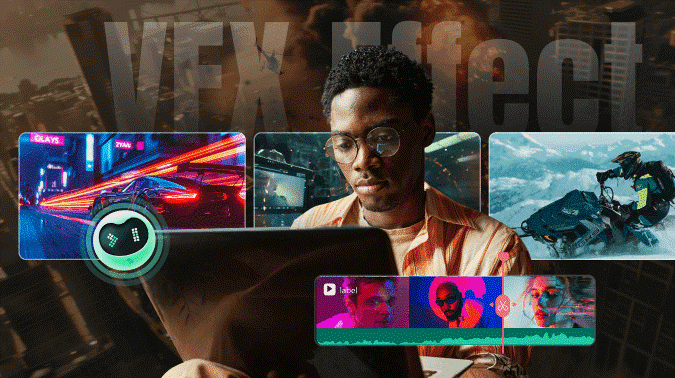The innovative potential of video-to-video AI transformers and text-to-video applications is changing the entire framework of creativity. Education and self-fulfilment have joined the emerging world of video graphy, and in the epicenter of this transformation is the new age of innovation. This is not just another technology update. Each one of these Video to Video AI and image to Video solutions works as a separate jewel of creativity and as a single comprehensive system. In this article, I present new citation AI video text producers and explain the impact they have had on the world of advanced and novice content producers.
1. Video to Video AI: Transforming Raw Footage into Cinematic Brilliance
The best example in the world demonstrating the current topic of one’s talent and creativity of a content creator is his or her ability to edit pieces of video and final image outputs. These assistants aim to provide an instant solution to the disgrace of the content produced today as a result of using text, voice, and image combination through logical AI processors. Digitizing through Video to Video AI is a new solution for turning low-quality files and drafts into perfection. These advanced solutions work to provide decor, colour combination, resolution change, collage smoothing, and application-based prompts designed with advanced out-of-the-box algorithms.
The advancements in AI technologies, such as Pika Labs and Runway ML, really blow my mind. In the past, the process of color-correcting a five-minute clip took hours of manual work. Now, it can be done in minutes. For v loggers and short film creators, and educators working on lectures or documentaries, these AI technologies are very useful because they improve the picture quality of the video while keeping the original motion intact.
2. Text to Video AI: From Written Word to Visual Reality
I believe that new advancements in AI, such as Text to Video, will change the lives of many creators, especially those who love storytelling. Now, a writer can effortlessly generate a video that depicts the description they provide, be it a scientific idea or a scene from a dramatic work. AI in text-to-video generators utilities natural language processing to grasp the context, emotion, and imagery, crafting seamless and stunning visuals in text-to-video output.
For example, I helped a university student make a video essay on climate change. Rather than selecting stock footage, we typed specific prompts into a video maker. The AI generated stunning images of melting glaciers, forest fires, and rising ocean levels—no cameras necessary. This technology transforms the educational landscape, enabling students and scholars to convey their findings and information far beyond the limitations of engagement offered by conventional slide provision.
3. Image to Video: Infusing Life into Static Images
The evolution of technology now lets us breathe life into still images through the use of Image to Video AI. This innovation enables users to animate photos, apply depth-of-field effects, and create lifelike movements from a single still image. With just a few clicks, images can now be turned into scroll able videos, time-lapses, or animated figures.
One of the projects I did was for a specific charity that only kept dated photographs of their work. With image-to-video technology, I was able to make a contemporary video from their history that was gracefully emotional. I was able to make a tribute video for their anniversary, which showcased their history. For digital historians, content marketers, and documentations seeking to enhance older materials, this technology can be a game-changer.
4. Combining Video to Video and Text to Video for Seamless Production
The creativity that a person has is limitless. The same goes for these technologies; they can be blended seamlessly. Begin with a rough outline and describe it in text to generate a visual storyboard through text-to-video AI, then polish the rest with video-to-video AI. This pipeline preserves a lot of the merit, with high creative control.
Widely available tools are now being used by numerous content creators to make YouTube shorts, explained videos, or TikTok videos that are full of drama and visually captivating while staying true to their brand. In my case, managing a small digital agency, the implementation of these tools increased our output threefold while keeping expenses the same. This shows that the technology available was greatly helpful, and not only to the big corporations.
5. Real-World Applications: From Academia to Entertainment
The features that AI video generators and AI Text to Video tools create can be used in the real world and not only by content creators and producers. Students use AI to create engaging visualisations for their thesis presentations, simplifying difficult concepts in academia. In marketing, companies create AI commercials for a fraction of the cost of a normal production. In entertainment, independent video game designers create cinematic trailers and marketing materials using AI technology.
As the clock ticks towards the year 2025, the latest advancements of AI technology foresee the production of real-time background generation, voice-driven lip-syncing, and real-time animated avatars that respond to feelings. These advancements AI video generators make are their videos more and more
human-like, useful, and convincing, which widens the variety of branches these videos can be used in.
Conclusion:
We are straddling the divide between technology and creativity. AI tools like Video to Video and Text to Video allow anyone to communicate concepts visually and no longer requires technical expertise. These technologies broaden access to content and creation, streamline production processes, and offer boundless opportunities for innovation in teaching, advertising, and the arts, among other fields.
Having real-world experience with these tools, I can say with confidence AI has integrated into the creative processes we use today. Whether you are an aspiring filmmaker, scholar, or digital storyteller, the current landscape of AI video creation invites unrestricted exploration.
The combined capabilities of image-to-video and video-to-video AI are not simply enhancing content but transforming the very essence of how we construct and communicate, radically transforming storytelling, how we envision stories, and how we present them to the audience.









